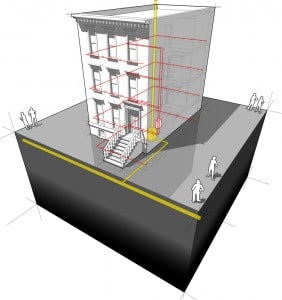How GHGi Analytics Records Scope 2 Emissions
These are indirect GHG emissions from the consumption of purchased electricity, steam, heating or cooling.
Call: +44 (0)1509 649 504
or
What are Scope 2 Emissions?
What are Scope 2 emissions? They are indirect CO2e emissions, i.e. from sources that are not owned or controlled by the organisation. They relate to both bought in electricity, steam, heating and cooling. This also includes electric vehicles owned by the company. Scope 2 emissions are part of the Streamlined Energy and Carbon Emissions Reporting (SECR) requirements. They are also included in the emissions to be measured as part of initiatives to achieve Net Zero.
Do you want to simplify your scope 1 and scope 2 emissions reporting? Click the link to find out about GHGi Analytics, our Scope 1 and Scope 2, greenhouse gas reporting tool.
How GHGi Analytics Records Scope 2 Emissions
Electricity
Electricity is is the main source of Scope 2 emissions. We use data from meter readings or bills to calculate the emissions. GHGi Analytics is designed to simplify the reporting process. There are two generic types of electricity meter that are used for the supply of electricity from the grid; half-hourly meters (HHMs) and Non-half hourly (NHHMs) meters. GHGi Analytics is designed to handle both types of meter.
For Half-hourly meters (HHMs) the readings can be input in a number of ways:
- The organisation’s electricity bills, requiring data to be entered manually
- The electricity supplier’s web portal from where a .csv file is downloaded.
- An email from the organisation’s electricity supplier to which a .csv file is attached.
- Where Monitoring & Targeting software is used a .csv file can usually be exported and imported into GHGi Analytics.
- In some cases, a feed from the data collector can be used.
For Non-half hourly meters (NHHMs) meter readings are usually taken from the bill and entered manually. If the organisation has fitted an automated meter reading (AMR) system, that should give accurate usage. GHGi Analytics is designed to cope with a range of issues relating to NHHMs. These include:
- Varying rate types; e.g. day, night and the Triads
- Sub-meters
- Billing periods straddling an organisation’s year end
The resulting information can then be used to complete the Streamlined Energy and Carbon Emissions Reporting documentation.
Imported Steam, Heating and Cooling
District heating and combined heat and power (CHP) plants sell heat and steam to neighbouring organisations. Special meters allow customers to be billed for the heat and steam used and provided data for calculating the associated scope 2 greenhouse gas emissions.
There is as yet no standardised measurement, so different suppliers may charge in different ways. The calculations for imported steam, heating and cooling are likely to be on a site by site basis. GHGi Analytics is designed to take these variations into account. It can than provide usable data for a CO2e emissions report.
This cloud based service is designed to minimise your administrative overheads and save you money.
For more information call us on +44 (0)1509 649 504 or email us on info@ghginsight.com.
Sustainability Vision Ltd. takes the security of your data very seriously. Please read our Data Privacy Notice for further details.


